Medical expert of the article
New publications
Preparations
Dermatitis ointment for children
Last reviewed: 03.07.2025

All iLive content is medically reviewed or fact checked to ensure as much factual accuracy as possible.
We have strict sourcing guidelines and only link to reputable media sites, academic research institutions and, whenever possible, medically peer reviewed studies. Note that the numbers in parentheses ([1], [2], etc.) are clickable links to these studies.
If you feel that any of our content is inaccurate, out-of-date, or otherwise questionable, please select it and press Ctrl + Enter.
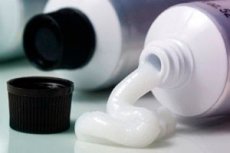
Treatment of any type of dermatitis in young children is carried out in a comprehensive manner, using various methods of therapy: medication, non-traditional, physiotherapy. External medications occupy a special place in it. The most effective drugs for combating the unpleasant symptoms of this disease are various ointments.
Indications dermatitis ointments for children
In children, the most common types of dermatitis are the following:
Various ointments that are considered popular for the treatment of skin diseases can be used as soon as the first symptoms of the disease appear. In seborrheic dermatitis, these are rashes and dry skin, mainly in the diaper area and on those parts of the head where hair grows. In atopic dermatitis, the first signs are: itching in the affected area, exudation. It is very important to start the correct treatment before complications appear. Therefore, as soon as your child has the first rash on the skin, the skin becomes too dry or other signs appear, you must immediately show the baby to a pediatric dermatologist.
Read also:
Release form
First of all, it is necessary to remember the fact that all ointments that can be used to treat dermatitis of various types are divided into non-hormonal and hormonal drugs. Among the effective non-hormonal ointments, doctors distinguish the following:
- D-Panthenol.
- Zinc ointment.
- Skin cap.
- Radevit.
- Naftaderm.
D-Panthenol. A preparation for improving the regeneration and trophism of the epidermis. This medicine based on the active component dexpanthenol maintains the normal function of skin tissues, normalizes cell metabolism, softens and nourishes the epidermis.
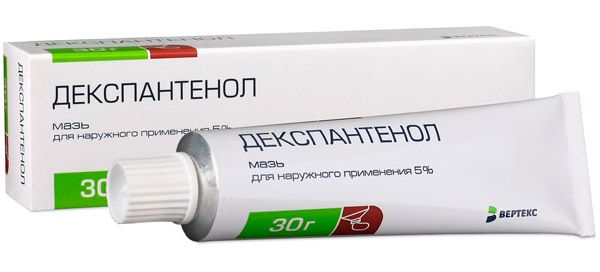
For the treatment of various dermatitis in children, the ointment is applied only to the affected skin, rubbed in with light massage movements until its components are absorbed into the epidermis. Use no more than four times in 24 hours. If dermatitis occurs in infants, then the doctor may advise applying the ointment every time after changing diapers or after bathing.
Patients with intolerance to dexpanthenol are prohibited from using this product. It does not cause side effects.
Zinc ointment. A remedy that is widely used to treat various types of dermatitis in adults and children. The medicine is based on the active component zinc oxide, the additional substance is petroleum jelly. It has an adsorbing, drying, disinfecting and astringent effect. Helps relieve inflammation and irritation that appear on the epidermis with various types of dermatitis.
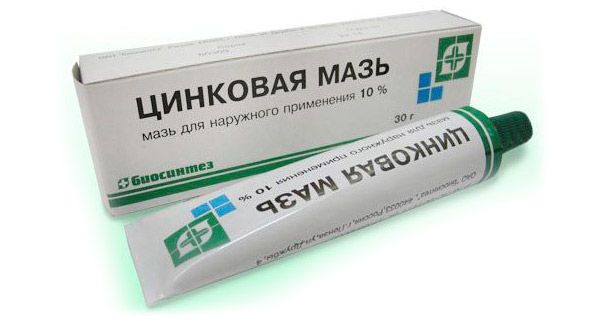
It is recommended to apply no more than three times in 24 hours, using a small amount of ointment. When the patient has cracks or wounds on the skin, they are first treated with an antiseptic. For the treatment of diaper dermatitis, it can be used more often, but only after a doctor's recommendation.
Patients who suffer from allergies and are intolerant to zinc oxide are prohibited from using the medicine. It may cause skin hyperemia or allergic rashes.
Skin-cap. A drug that has proven itself in the treatment of psoriasis and dermatitis of various types. The medicine based on zinc pyrionate fights microbes, fungi and bacteria.
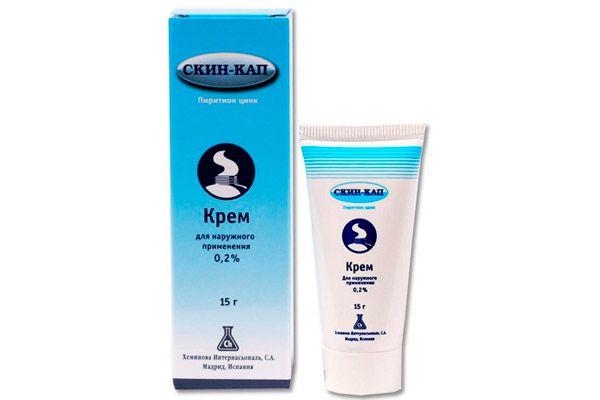
Dermatitis therapy in children is carried out as follows: the drug is applied no more than three times in 24 hours to the damaged skin. Treatment continues for two weeks.
Patients who suffer from zinc pyrionate intolerance cannot use the drug. It is forbidden to rub into the skin together with ointments based on glucocorticosteroids. May cause allergies.
Radevit. A drug that helps improve skin regeneration and relieve inflammation. The drug based on retinol (vitamin A), ergocalciferol and tocopherol moisturizes the skin well, makes it soft and pleasant to the touch, relieves itching and flaking.
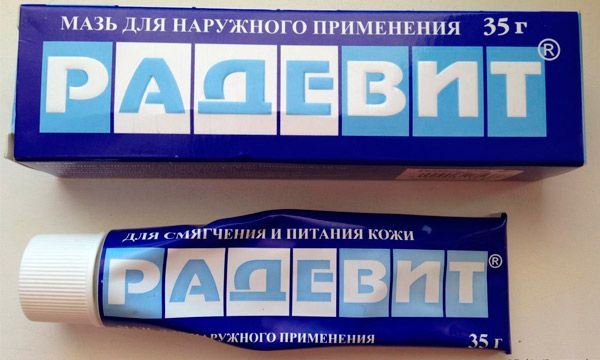
Apply to the affected skin areas and adjacent areas two to four times per 24 hours. If the skin is very flaky, a bandage can be used. If there are defects or wounds on the skin, they should be treated with an antiseptic and only then apply the ointment.
Patients with intolerance to the components of the drug, hypovitaminosis A, inflammatory processes on the skin are prohibited from using the product. May cause allergies.
Naftaderm. A medicinal product based on refined naphthalan oil. It has antipruritic, disinfectant, anti-inflammatory and wound-healing effects. It is used primarily for seborrheic dermatitis.

It is recommended to apply a thin layer of ointment to the affected skin twice a day. The duration of therapy is individual and is determined by the attending physician, but usually the treatment lasts two to four weeks.
Patients with intolerance to the components of the drug, hemorrhagic syndrome, renal failure, anemia are not recommended to use this product. It can cause folliculitis, dry skin, allergies.
The most popular hormonal ointments for dermatitis are:
- Loridern S.
- Advantan.
- Fluorocort.
- Celestoderm B.
But it is worth understanding that they are not always suitable for treating children, so before using it, you should consult with your doctor or carefully read the instructions.
Lorinden S. A medicinal product based on the active components clioquinol and flumethasone pivalate. It has anti-inflammatory, antifungal and antibacterial action.
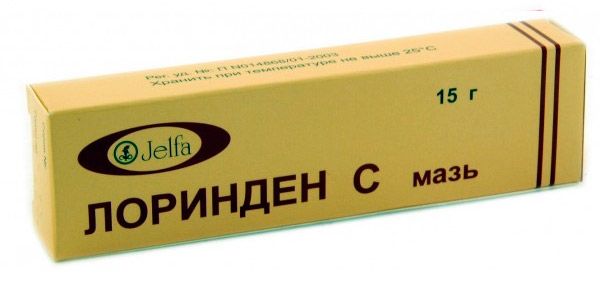
It is recommended to apply only to those areas of the skin that have been damaged by the pathological process. The first days, the ointment can be used two or three times in 24 hours, but as soon as positive dynamics appear, the use is reduced to one or two times. The duration of therapy should not exceed two weeks.
Patients with tuberculosis of the skin, chickenpox, cutaneous syphilis, rosacea or acne vulgaris, perioral dermatitis, trophic ulcers, skin infections, as well as those who are intolerant to the ointment substances, are prohibited from using the preparation. Children under ten years of age can only apply after a doctor's recommendation. May cause allergies, burning, dry skin, itching, atrophy.
Advantan. A medicinal product based on the active component methylprednisolone aceponate. Helps suppress allergic and inflammatory reactions that appear on the skin. Can be used from the age of four months.
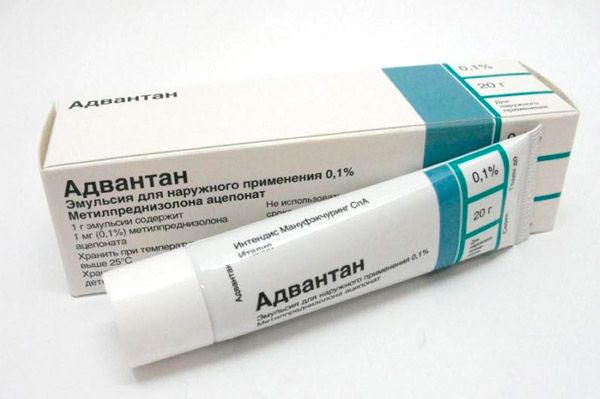
It is recommended to apply once every 24 hours only to the affected skin. The duration of therapy for children is no more than four weeks. The ointment cannot be used on wet wounds.
Patients with tuberculosis or syphilis of the skin, rosacea, viral diseases of the skin, perioral dermatitis, as well as those who are allergic to methylprednisolone aceponate, are prohibited from using the drug. May cause allergies, itching, burning, vesicular rash.
Fluorocort. A medicinal product based on the active component triamcinolone acetonide. It has anti-inflammatory, anti-edematous, and anti-allergic effects.

It should be applied in small quantities two or three times in 24 hours (but not more than 15 g of ointment per day). When using dressings, the daily dose is reduced to 10 g. The duration of therapy is no more than 15 days.
Patients with skin syphilis, skin tuberculosis, fungal or viral skin diseases, perioral dermatitis, tumors or cancers, as well as those who are intolerant to triamcinolone acetonide, are prohibited from using the ointment. It may cause hypertrichosis, erythema, secondary infectious skin diseases, allergies.
Celestoderm B. A medicinal product based on the active component betamethasone valeriat. Inhibits the metabolism of arachidonic acid, relieves inflammation and allergy symptoms.
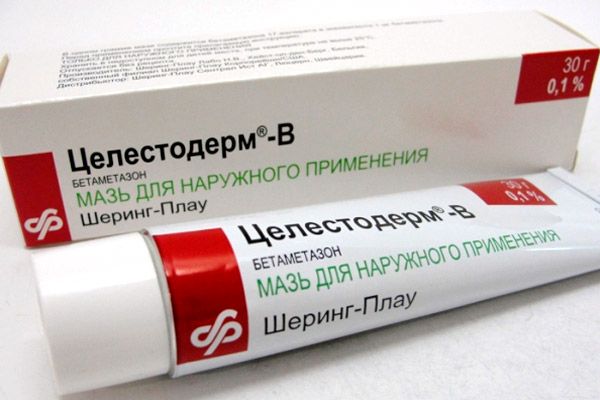
Apply to the skin one to three times per 24 hours. The dosage depends on the patient's condition and is determined by the attending physician. Often, to improve the condition, it is necessary to apply only once a day.
Patients who suffer from allergies and intolerance to the active substances of the product are prohibited from using the ointment. It is not recommended for pregnant women and children under six months. It can cause allergies, dryness, burning, folliculitis, contact dermatitis, and skin atrophy.
Ointment for atopic dermatitis in children
With atopic dermatitis, allergic rashes appear on the skin, the skin becomes dry and begins to peel. The most popular means for treating this type of dermatitis in children are various anti-inflammatory ointments:
- Pimafukort.
- Locoid.
Pimafukort. A medicinal product based on the active components neomycin, natamycin and micronized hydrocortisone. It has anti-inflammatory, antifungal and antibacterial action.
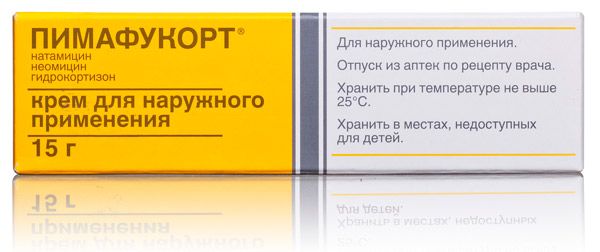
It is recommended to use the product two to four times per 24 hours. For the treatment of children, a small amount of the product is applied only to limited areas of the skin. The duration of therapy is determined by the attending physician.
Patients with rosacea, tuberculosis of the skin, viral infections, skin ulcers, ichthyosis, tumors, anogenital itching, as well as those who are intolerant to any substance of the ointment, are prohibited from using the product. May cause allergies, thinning of the skin, delayed wound healing, hypertrichosis, contact dermatitis.
Lokoid. A medicinal product based on the active component hydrocortisone 17-butyrate. It has antipruritic, anti-inflammatory and anti-edematous effects.
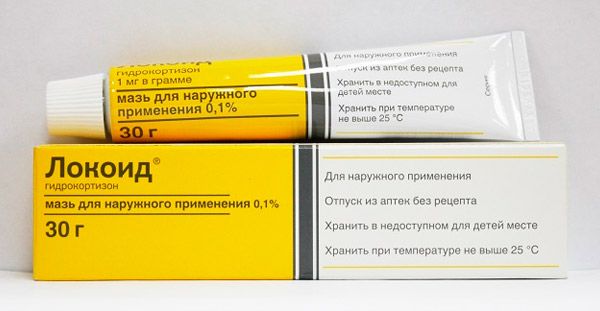
The preparation is applied one to three times per 24 hours. If the patient has positive dynamics, the ointment can be used only two to three times per week. To increase the penetration of the product, the ointment can be rubbed in. Bandages can be used.
Patients with individual sensitivity to hydrocortisone 17-butyrate, tuberculosis or syphilis of the skin, viral skin diseases, parasitic skin infections, rosacea and acne, have wounds or ulcers on the skin, fungal skin diseases should not use the ointment. It can cause skin irritation and allergies.
Ointment for allergic dermatitis for children
In case of allergic dermatitis, it is very important to moisturize the skin well, quickly relieve inflammation and unpleasant itching. The following ointments are often used for this:
- Elobase.
- Bepanthen.
Elobase. A product based on phosphoric acid, paraffin, mineral oil, sodium hydroxide. Helps moisturize dry skin, creating a special protective film on the skin.

The affected skin areas must be thoroughly cleaned and dried before applying the ointment. After applying a small amount of ointment to the damaged area, rub it in with light movements.
May in rare cases cause allergic reactions, itching and burning.
Bepanten. A medicinal product based on dexpanthenol. It has a regenerating effect on the skin, improves the exchange between cells.
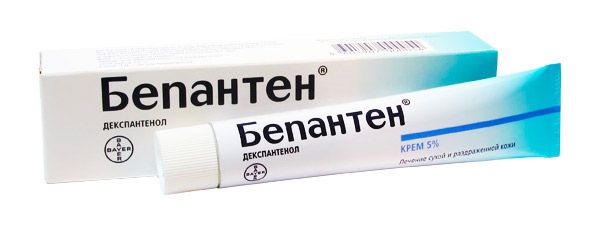
It is recommended to apply Bepanten to the skin that has been damaged and rub it in a little. Use once or twice in 24 hours. When treating diaper dermatitis, the ointment should be applied every time the diapers are changed.
Patients who suffer from allergies and individual intolerance to the active substances of the product are prohibited from using it.
Ointment for diaper rash for children
With diaper dermatitis, the skin under the diaper becomes inflamed. This happens due to the peculiarities of the structure of children's skin. The most popular ointments for the treatment of diaper dermatitis in children are:
- Drapolein.
- Desitin.
Drapolene. A medicinal product based on the active components cetrimide and benzalkonium chloride. It is an antiseptic for external use. It has an antimicrobial effect.
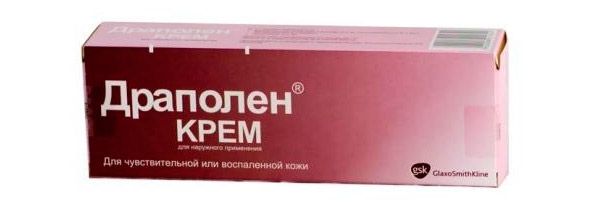
To treat diaper dermatitis in infants, you must first wash and dry the affected skin, and only then apply the ointment. When the first signs of the disease appear for the first time, the drug is used three times in 24 hours. Can be used for prevention.
Patients who suffer from allergies and intolerance to the active substances of the product are prohibited from using it. It may cause allergic reactions.
Desitin. A medicinal product based on the active component zinc oxide. It has a drying and astringent effect.
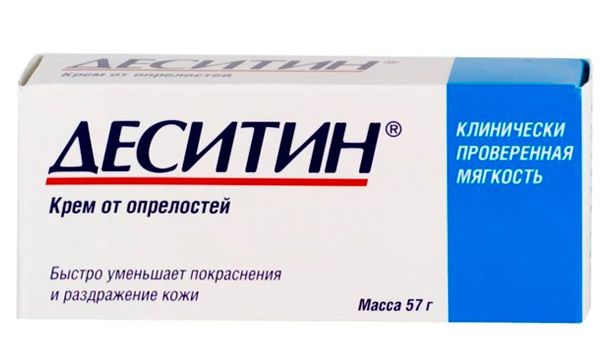
If the first signs of diaper dermatitis have just appeared, the ointment should be applied three times in 24 hours. Before using the preparation, the skin is washed and dried.
Patients who suffer from allergies and intolerance to the active substances of the product are prohibited from using it. It may cause allergies.
Dermatitis ointment for children under one year
The skin of children under one year is particularly sensitive, it is very thin and easily irritated. That is why various types of dermatitis appear in babies much more often than in older children. Treatment of children under one year should be carried out under the supervision of the attending physician. All ointments should be used with extreme caution.
The most suitable drug for infants is Skin-cap. It helps to relieve inflammation very quickly. In addition, it can be used for a long period of time. Also, in some cases, doctors recommend using Bepanten or D-Panthenol. With their help, you can minimize the number of bacteria, which speeds up the healing of damage.
Among the popular healing ointments that can be used to treat children under one year old, one can highlight Curiosin, Methyluracil ointment (10%), Actovegin. Radevit is used to stimulate the regeneration of damaged skin.
Let's consider the pharmacodynamics and pharmacokinetics of ointments for dermatitis for children using the example of the popular drug "D-Panthenol".
Pharmacodynamics
It is used for external use, accelerating the regeneration of the skin. The composition of the drug includes dexpanthenol, which is a derivative of pantothenic acid. It takes an active part in acetylation, helps to release energy from carbohydrates, synthesize and break down fatty acids.
Thanks to pantothenic acid, the protective functions of the skin are supported. D-Panthenol regenerates the skin, normalizes metabolism in cells, relieves inflammation, softens and moisturizes the skin.
Storage conditions
It is very important to store any dermatitis ointments in a place that is completely inaccessible to small children. The air temperature should not exceed +25 degrees.
 [ 24 ]
[ 24 ]
Attention!
To simplify the perception of information, this instruction for use of the drug "Dermatitis ointment for children" translated and presented in a special form on the basis of the official instructions for medical use of the drug. Before use read the annotation that came directly to medicines.
Description provided for informational purposes and is not a guide to self-healing. The need for this drug, the purpose of the treatment regimen, methods and dose of the drug is determined solely by the attending physician. Self-medication is dangerous for your health.

